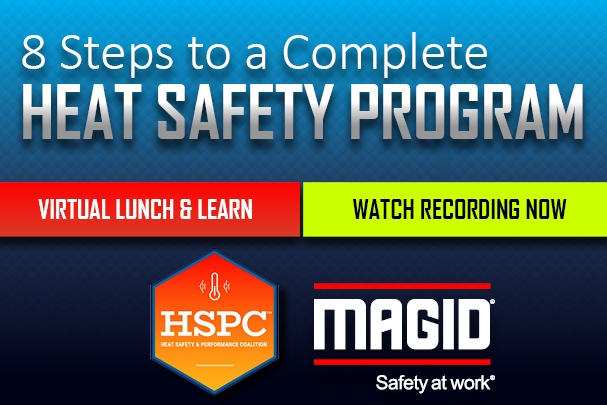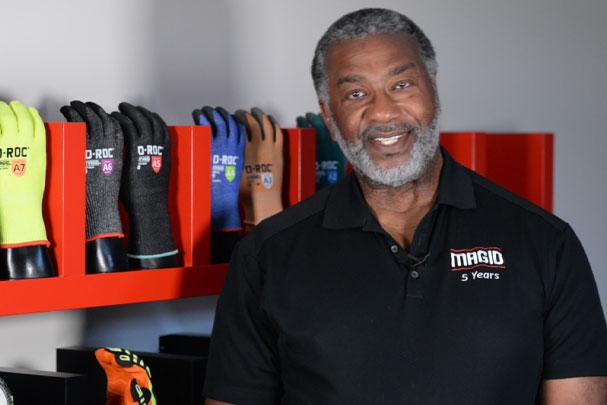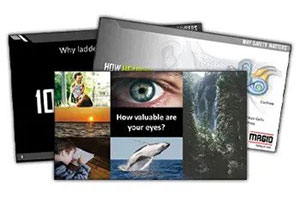
8 Simple Steps to Heat Safety on the Job
By John Heniff, Safety Writer, Magid
Heat safety is a problem that’s likely to play a bigger part than ever in your day-to-day work as time goes on. In the past, comprehensive guidelines for keeping workers safe in the heat have been scarce, leaving many safety managers unsure where to begin. But in 2021, experts at the Heat Safety & Performance Coalition (HSPC) (formerly the National Heat Safety Coalition) published a consensus document with key steps that you can use to keep your workers safe. Here are 8 subjects to think about when putting together your heat illness prevention strategy!


1. HEAT HYGIENE
Before they even set foot on the jobsite, heat hygiene education can teach workers the basics of how to stay safe. Show safety training presentations and place safety reminder posters around your workplace to explain the signs, symptoms, and risks of heat illness as well as emergency actions to take if they see a worker in trouble.
In addition to general heat hygiene education, be sure to organize your daily job schedule to account for changing environmental specifics. Provide day-to-day or hour-to-hour jobsite temperature updates in hot conditions so work teams can perform health status checks and be aware of any personal risk factors. You can also pair-up workers or supervisors to create a buddy system where they keep an eye on each other and remind each other to hydrate throughout the day.


2. HYDRATION
Providing hydration solutions for your workers is important. But if the water or electrolyte-replacing beverages are warm, unpalatable, or located far away from the jobsite, your workers won’t want to rehydrate. On top of that, if your teams are working to the point of over-exertion on extremely hot and humid days, they can produce more heat internally than they are losing. In these situations, they can be hydrating and still suffer a potentially deadly heat stroke because of the exertion combined with outside temperatures. You can keep your crew hydrated and help prevent core body temperatures from rising too high by providing cool water and/or electrolyte-replacing beverages within easy distance of the jobsite.


3. HEAT ACCLIMATIZATION
Over 70 percent of heat-related deaths occur during a worker’s first week in the heat. This is mostly due to their body being unprepared for working long hours in high temperatures. Get your workers’ biological defenses ready over the course of 5-7 days by slowly introducing them to the job temperature via heat acclimatization. For example, start with an hour or two in the heat on the first day before increasing the increment more and more until they are working a full shift. After the heat acclimatization process, their bodies should be able to sweat more and have a lower heart rate in hot conditions.


4. ENVIORNMENTAL MONITORING
Weather reports can provide a broad overview of the temperatures you can expect in the area. But what about your worker’s jobsite, specifically? The best way to track the temperature, humidity, wind speed, and sun exposure in a particular area is with a Wet Bulb Globe Temperature (WBGT) monitor. This monitor can help you determine the true environment of your jobsite, especially if it contains natural or manufactured elements which can block wind, amplify sunlight, or give off heat and make the area hotter.


5. PHYSIOLOGICAL MONITORING
Modern technology has afforded us the luxury of tracking risk factors like increased heart rate or skin temperatures through wearable gadgets and smart phone applications. You can encourage your workers to use a smartwatch or heart rate tracker to help them be aware of risk factors that can lead to heat illnesses, too.


6. BODY COOLING STATIONS
In addition to hydration, having a place where workers can escape the heat is incredibly important to help them recover. If you don’t have an already established area for cooling, start scouting the best spots in your facility or jobsite. Shady areas, cooling tents, ventilated bathroom trailers, or air-conditioned lunchrooms all make great choices. Any place that allows your people to rest in a cool environment where cold towels and rehydrating beverages can be found works!


7. EMERGENCY PREPAREDNESS
Even after putting preventative measures in place, knowing how to care for an overheated worker is crucial if your workers need to respond to potential emergencies. Have your workers practice drills and scenarios ahead of time to know what to do in serious situations. Create a hands-on hypothetical situation where a worker is “exhibiting” symptoms of heat stroke. Make sure someone pretends to call EMS as other team members put emergency cooling procedures, such as preparing a cold-water immersion tub or a tarp as a makeshift tub, into action.


8. BODY COOLING PPE
In addition to your workers’ usual PPE, new cooling garments can lower their skin temperature without the need for soggy ice packs or slimy fabrics. Magid® Cool Powered by Mission® HydroActive™ technology cooling gear is designed to activate with water of any temperature to cool the garment as low as 30 degrees below average body temperature. It takes only seconds to activate but can last up to two full hours and can be re-activated throughout the workday as needed. This way, your workers can keep their cool even while working.


Get a complete heat safety toolkit FREE including a step-by-step guide, safety reminder posters, downloadable training, and more!









